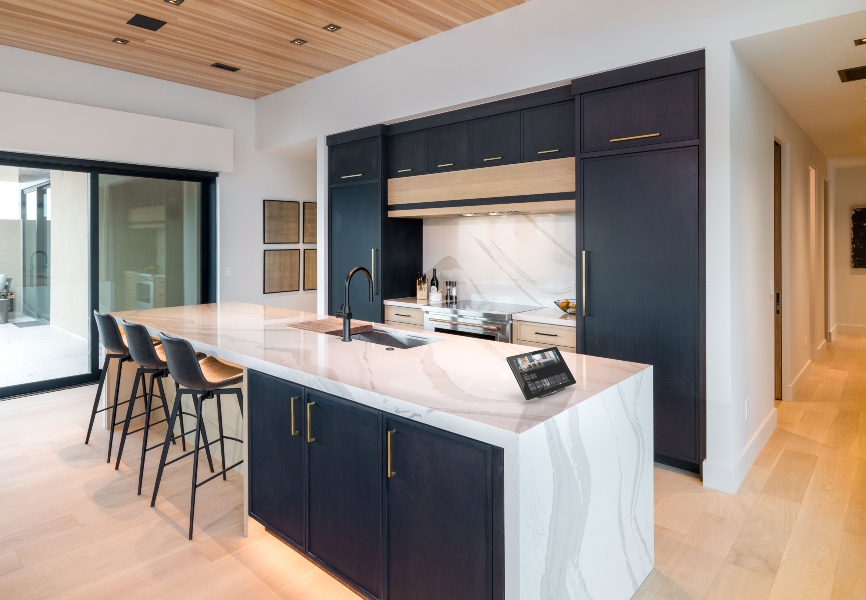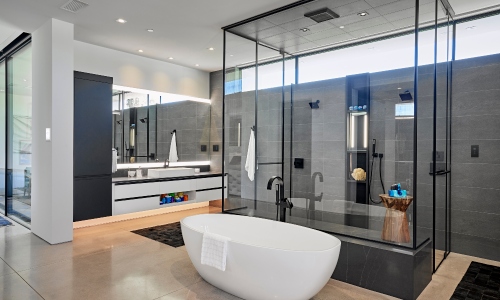Integrators have likely seen anecdotal evidence, but there is extensive research to back it up. The demand for connected kitchens and baths is rapidly increasing, which means that business opportunities in bots are at an all-time high.
According to Grand View Research, the sector is “expected to grow at a compound annual growth rate (CAGR) of 11.6% from 2023 to 2030.”
There are opportunities for integrators in the kitchen and bath industry. But how can you turn it into more business?
I serve as a liaison between Crestron and the design-build community, so I regularly attend NKBA (National Kitchen and Bath Association) events. He finds that people who specify kitchen and bath products, from designers to end users, have one thing in common: That is, “I don't know what I don't know.”
As a technology integrator, you know the potential capabilities of kitchen and bath technology, including everything from lighting to in-mirror TVs to automatic air and water temperature control.
Your strategy, especially for high-end customers, should maximize the capabilities of technology and help them imagine the full potential of their life experiences.
It turns out that a subtractive approach to discovery is a much better process than an additive one. When a client has to narrow down the list of options you have presented, you have given them the gold standard to aspire to and sparked their imagination. And remember. If your prospects are satisfied with “what’s good,” it will be difficult to introduce them to “what’s better” or “what’s best.”
Functional Kitchen: Rich Technology Opportunities

Discovery is very important in the kitchen. Clients often focus on communicating who is the “chef” in their family, but they may not realize how important kitchen space is for more than just food preparation.
The kitchen is the heart of the home, the place where you eat casual meals, and the room that people gravitate to when entertaining clients. To do this, you need more than just task lighting. Tunable LEDs with circadian programs can be incredibly effective.
Your kitchen needs music, but it often also needs video. (This is also a space where voice control and non-contact motion sensors are especially useful, since cooks' hands are often dirty.)
If the discussion extends to things like display lifts, make sure the design-build team understands the need for heat dissipation and serviceability access. It is important to be able to access the equipment without reaching into the cabinet.
This is another reason why technology integrators need a seat at the table early in the planning stages if they want to grow their business with kitchen and bath projects.
What does it mean to have a “spa-like bath” at home?
“We've all heard a lot about the current demand for 'spa-like bathrooms.' But what does that mean in a practical sense?” Crestron Business Development asks director João Arsenal.
“For many, that will mean taking a bath to 'make sense' of how the day has gone. It again begins with circadian lighting, which can be adapted to mimic sunlight when clients apply makeup, then cycles to a warm candlelight effect in the evening. ”
She also points out that music is likely to be questioned there as well. Baths are also the biggest opportunity for integrators to implement wellness technology and further grow their business.
Bathrooms are another great opportunity to sell automation, Arsenal said.
“This is one of the rooms in the house that many clients prefer to 'set and forget,' as every feature of the space, from the lighting levels to the audio volume, can be adjusted to suit the mood of the day.” is.
“We continue to open our APIs to other manufacturers so that they can control our systems and devices from anywhere, including in the shower.”
Arcenal's final advice for integrators is to remember that the opportunities for technology solutions (and business as well) are unique to each kitchen and bath space. As most integrators probably know, the best way to find out how your clients use these rooms is to talk to them.
From there, the integrator can learn quite a bit about what the family wants for the rest of the home, and a business-savvy dealer can significantly refine plans from a simple conversation about the kitchen and bath. Can be expanded.
These rooms can be complex, so opportunities for technology solutions are unique to these spaces. But as you talk to your customers about how they'll use these rooms, you'll learn a lot about what their families want for the rest of the home.
If you liked this article and would like to receive more valuable industry content like this, click here to sign up for our digital newsletter.


